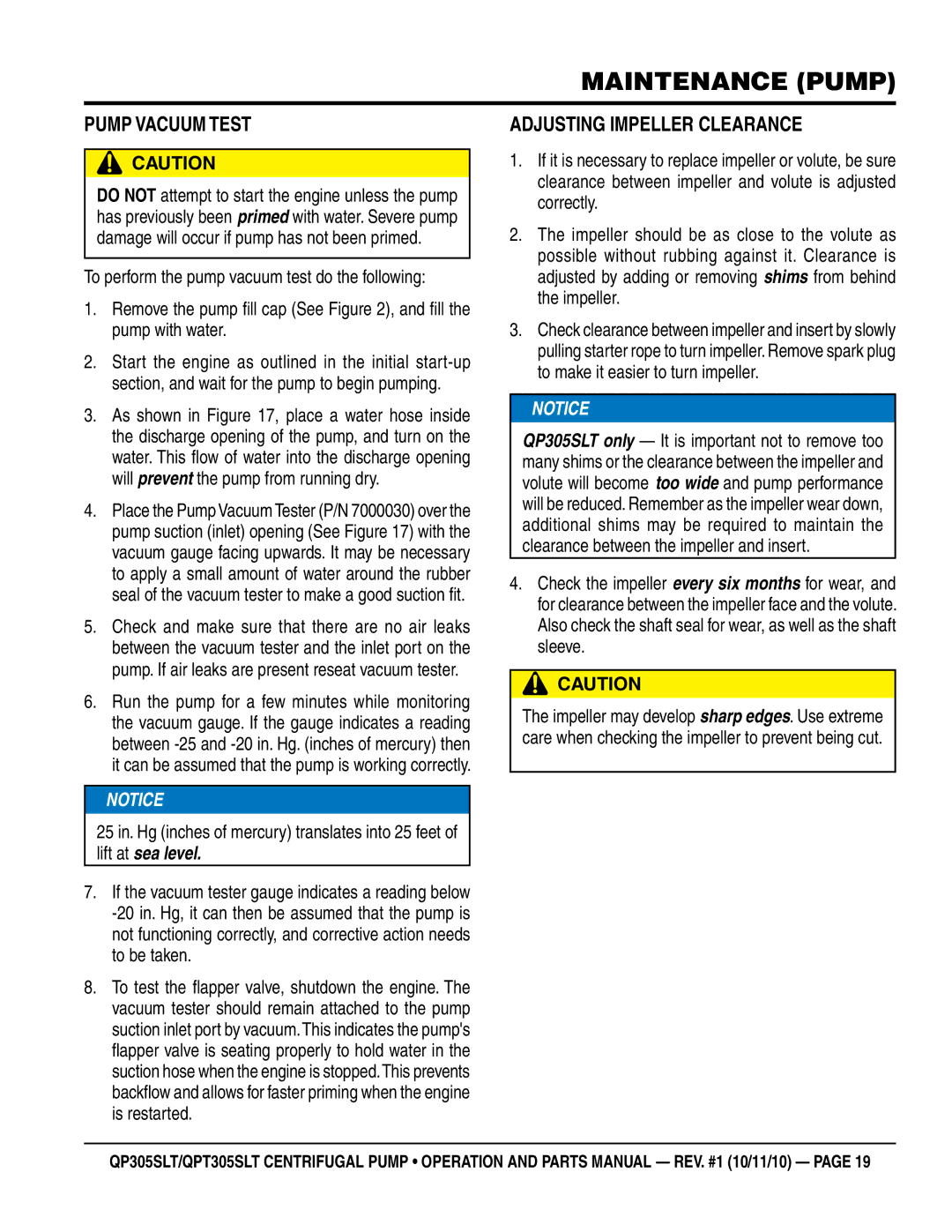QPT305SLT, QP305SLT specifications
The Multiquip QPT305SLT is a state-of-the-art portable generator designed for construction sites, outdoor events, and emergency power needs. Known for its robust performance and reliability, the QPT305SLT is a standout choice for those requiring a dependable power source in demanding environments.One of the main features of the QPT305SLT is its powerful engine. Equipped with a high-efficiency, 305 cc engine, the generator provides an output of up to 3,000 watts, making it suitable for various applications, from powering tools to providing backup energy during outages. The engine's design focuses on fuel efficiency and low emissions, aligning with current environmental standards while ensuring long operating times between refueling.
In terms of technology, the QPT305SLT incorporates advanced noise reduction systems, allowing it to operate at lower decibel levels, making it ideal for use in residential areas or noise-sensitive environments. An intelligent monitor system provides real-time data on voltage and frequency, ensuring that users are always aware of their power situation and can make informed decisions about their energy needs.
The QPT305SLT also features an integrated inverter, which helps deliver clean and stable power suitable for sensitive electronic devices. This feature is particularly beneficial for users needing to power computers, communication equipment, or medical devices. The inverter technology not only enhances the quality of the output power but also improves fuel efficiency.
Durability is another characteristic that sets the QPT305SLT apart. The generator is built with a heavy-duty frame and protective features to withstand the rigors of outdoor use. Additionally, it includes a maintenance-friendly design, making service checks and repairs straightforward.
Portability is a significant advantage of the QPT305SLT. With a lightweight construction and ergonomic handle design, moving the generator from one location to another is easy, making it an excellent choice for contractors and event organizers alike.
Overall, the Multiquip QPT305SLT combines power, efficiency, and user-friendly features, establishing itself as a reliable option for those in need of versatile and portable power solutions. Whether for job sites, outdoor activities, or emergency backups, this generator is engineered to meet the highest standards of performance and durability.

